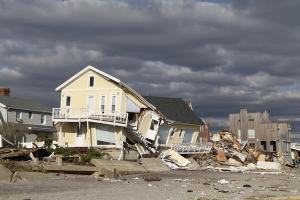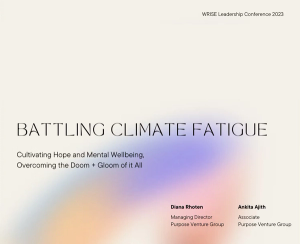Back to Latest

Property insurance functions as a critical risk transfer mechanism, enabling individuals and businesses to mitigate the financial impact of unpredictable events. However, in the property insurance sector, rising premiums and increased volatility in reinsurance suggest that the overall risk being transferred within the system is reaching an untenable level.
If you’d like to read more of our thoughts on this topic, please download the PVG Concept Note: Property Insurance in an Era of Climate-Related Disasters.
At the same time that inflation is climbing and other causal factors are at play, climate-related disasters are rapidly increasing in both intensity and frequency, thus contributing to the reshaping of cost dynamics for underwriting risk models. In the 1980s, the United States experienced, on average, one billion-dollar disaster (adjusted for inflation) every four months. Today, these significant disasters occur approximately every three weeks.
Because these disasters are no longer predictably rare, the U.S. insurance market is stressed. Based on available data, 2023 was the worst year for home insurers since 2000, with losses reaching $15.2 billion—more than twice the losses reported in 2022. The very magnitude of these losses is making it harder for insurers to sustain traditional indemnity models, with modestly rising premiums struggling to keep pace.
There is evidence that the insurance market is beginning to fail as a risk transfer system, and These consequences of market failures will ultimately, if not immediately, affect all of us.
- Rising Premiums Home insurance premiums have increased by 21% nationwide between 2015-2023, outpacing inflation. Increases in premiums across states have not been proportional to increases in risk or losses, but rather depend primarily on the level of state regulation on insurance policies.
- Increasing Losses for Insurers In 2023, home insurers lost money in 18 states, with multiple companies withdrawing from high-risk markets such as California, Louisiana and Florida.
- Growing Insurance Gap If the gap between inflows (premiums) and outflows (claims) is staggeringly different, insurance as a risk transfer system cannot function. In 2022, residual property insurance plans, covering the private insurance gap, collected $5B in premiums to cover $837B of insured value.
Something should not be considered a market-based solution if it does not work across the marketplace. For the insurance system to continue functioning effectively as a risk transfer mechanism, it must not only distribute risk but also systematically reduce it. This requires integrating innovative models that incentivize risk mitigation while providing sustainable insurance options for high-risk communities.
For instance, we have been exploring how to develop a framework for tailoring insurance models to localized risks through a portfolio approach. Specifically, layering traditional indemnity insurance with parametric policies at the household level with reciprocal insurance and CAT bonds at the local level, which would then be interwoven with a community investment fund that balances disaster relief payments with proactive resilience investments. Under this model, government-funded programs would be used primarily to support community investment and post-disaster relief, reducing recovery costs and investing in mitigation tactics, but also may be necessary to help reduce the initial cost of scaling new private sector products until they reach scale.
Thus, to be able to execute on this approach, a more proactive and thoughtful partnership between public and private dollars is needed. Too often we think about public dollars as a “substitution” model, stepping in only when the private sector can no longer profitably sustain their model. If we can thoughtfully layer in public and private dollars simultaneously versus sequentially, we might be able to bring to market a more viable and sustainable approach that rebalances the equation of inflows and outflows thus enabling property insurance to serve as a market-wide solution. And, this is just one idea.

